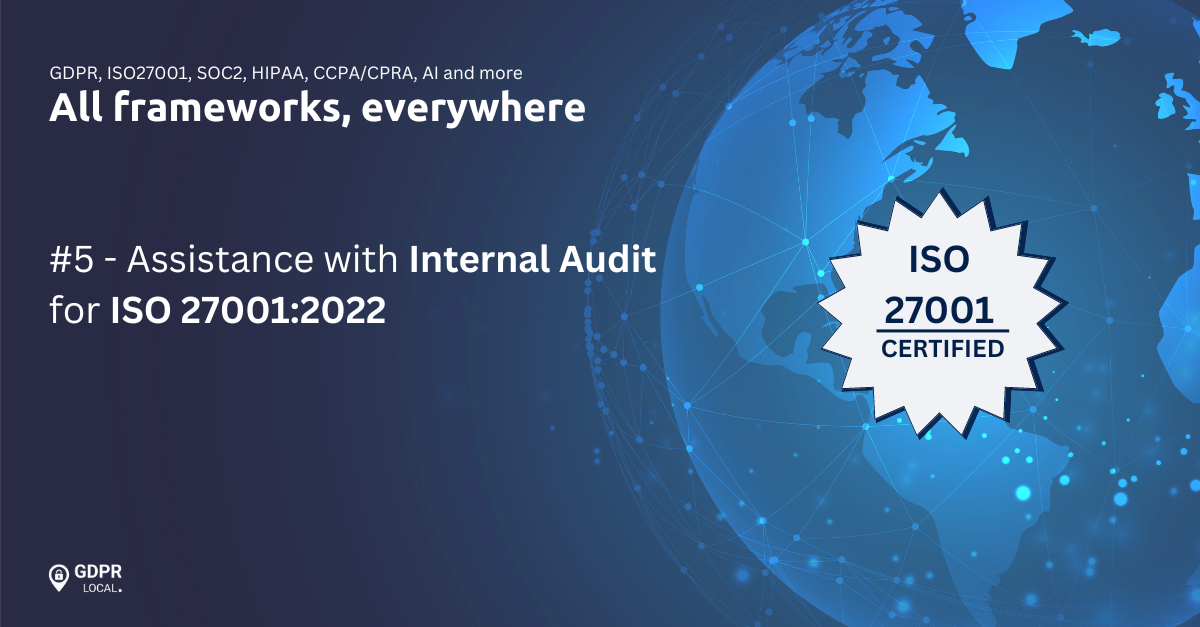
Assistance with Internal Audit for ISO 27001:2022
Now that we’ve explored the significance of ISO 27001:2022 and the essential documentation required for compliance, let’s delve into the practical aspect of maintaining adherence to this standard. One of the crucial steps in ensuring ongoing compliance with ISO 27001:2022 is conducting internal audits.
Internal audits serve as a proactive measure to assess the effectiveness of an organization’s Information Security Management System (ISMS) and identify areas for improvement. By conducting regular internal audits, organizations can verify the implementation and effectiveness of their security controls, policies, and procedures in accordance with ISO 27001:2022 requirements.
Here’s a step-by-step guide to assist you in conducting an effective internal audit for ISO 27001:2022:
Preparation Phase | – Define the scope and objectives of the internal audit, ensuring alignment with the requirements of ISO 27001:2022. – Establish an audit team comprising individuals with relevant expertise in information security management and auditing. – Review the mandatory documentation outlined in ISO 27001:2022, including the Information Security Policy, Risk Assessment, Statement of Applicability, and other essential documents. |
Audit Planning | – Develop an audit plan outlining the audit schedule, objectives, criteria, and methodologies to be used during the audit process. – Identify key areas to be audited, such as information security controls, risk management practices, and compliance with regulatory requirements. – Allocate resources and determine the audit scope, taking into account the organization’s size, complexity, and operational environment. |
Audit Execution | – Conduct on-site or remote audits, depending on organizational requirements and logistical considerations. – Interview key personnel and stakeholders to gather information and insights regarding the implementation of ISMS controls and procedures. – Review documentation, records, and evidence to assess compliance with ISO 27001:2022 requirements. – Perform testing and verification activities to validate the effectiveness of security controls and risk management processes. |
Audit Reporting | – Document audit findings, including observations, non-conformities, and areas for improvement, in a comprehensive audit report. – Clearly communicate audit results to relevant stakeholders, including management, to facilitate decision-making and corrective actions. – Provide recommendations for addressing identified non-conformities and improving the organization’s information security posture. |
Follow-up and Continuous Improvement | – Monitor the implementation of corrective actions and preventive measures to address identified non-conformities. – Conduct periodic follow-up audits to verify the effectiveness of corrective actions and ensure ongoing compliance with ISO 27001:2022. – Continuously review and update the ISMS to adapt to changes in the organizational context, emerging threats, and regulatory requirements. |
By following these steps and integrating internal audits into your organization’s information security governance framework, you can strengthen your ISMS, mitigate risks, and demonstrate a commitment to maintaining compliance with ISO 27001:2022. Internal audits not only provide valuable insights into the effectiveness of your security measures but also serve as a proactive measure to safeguard sensitive information and preserve organizational resilience in the face of evolving cyber threats.
Stay tuned for more insights and guidance on your ISO 27001 journey!